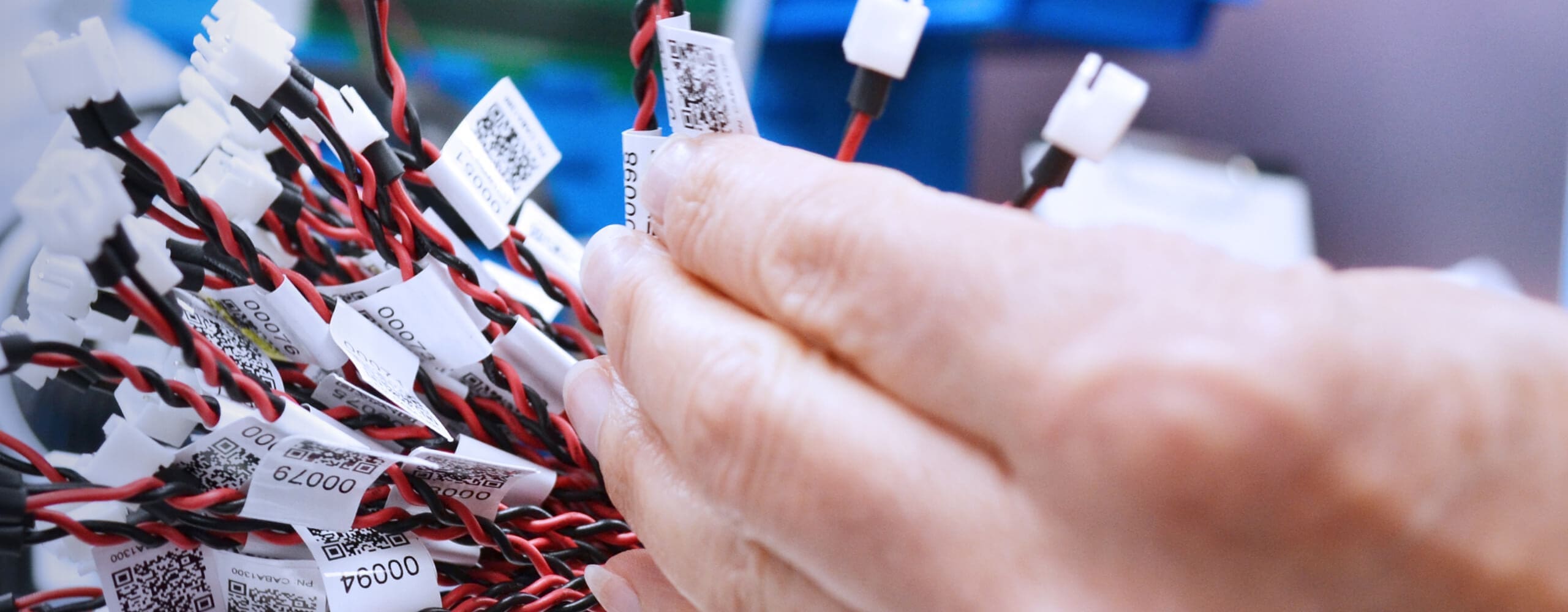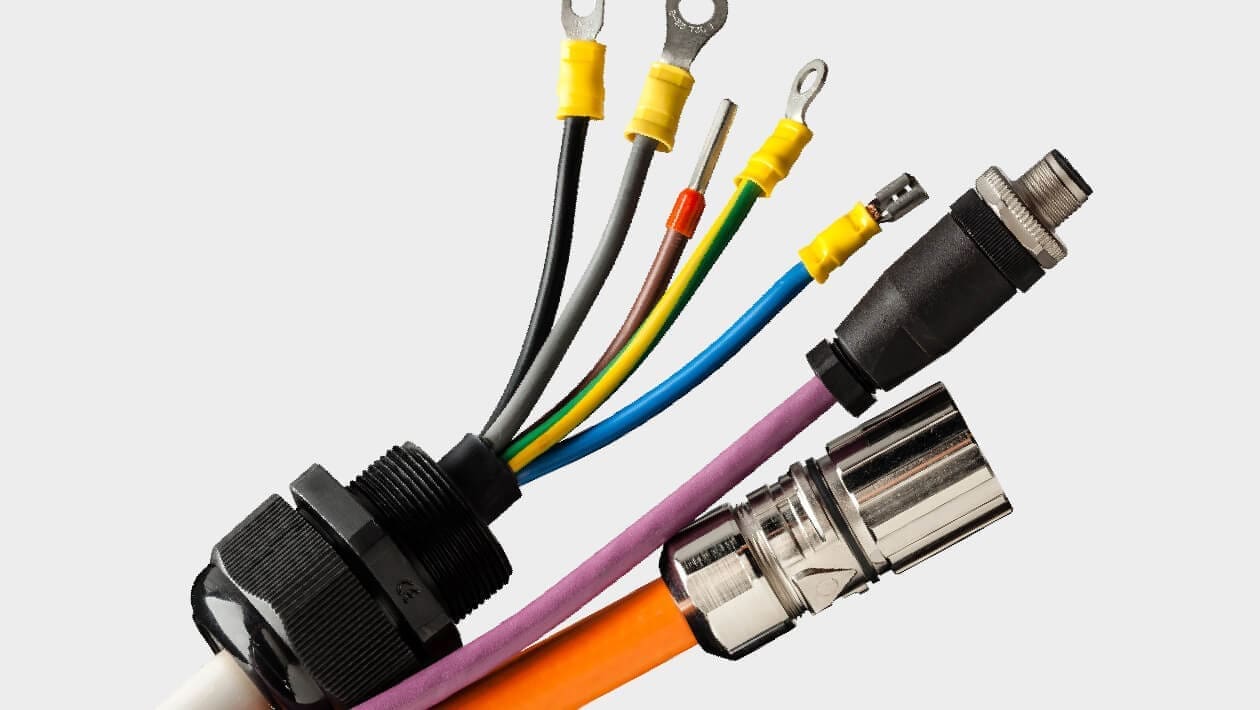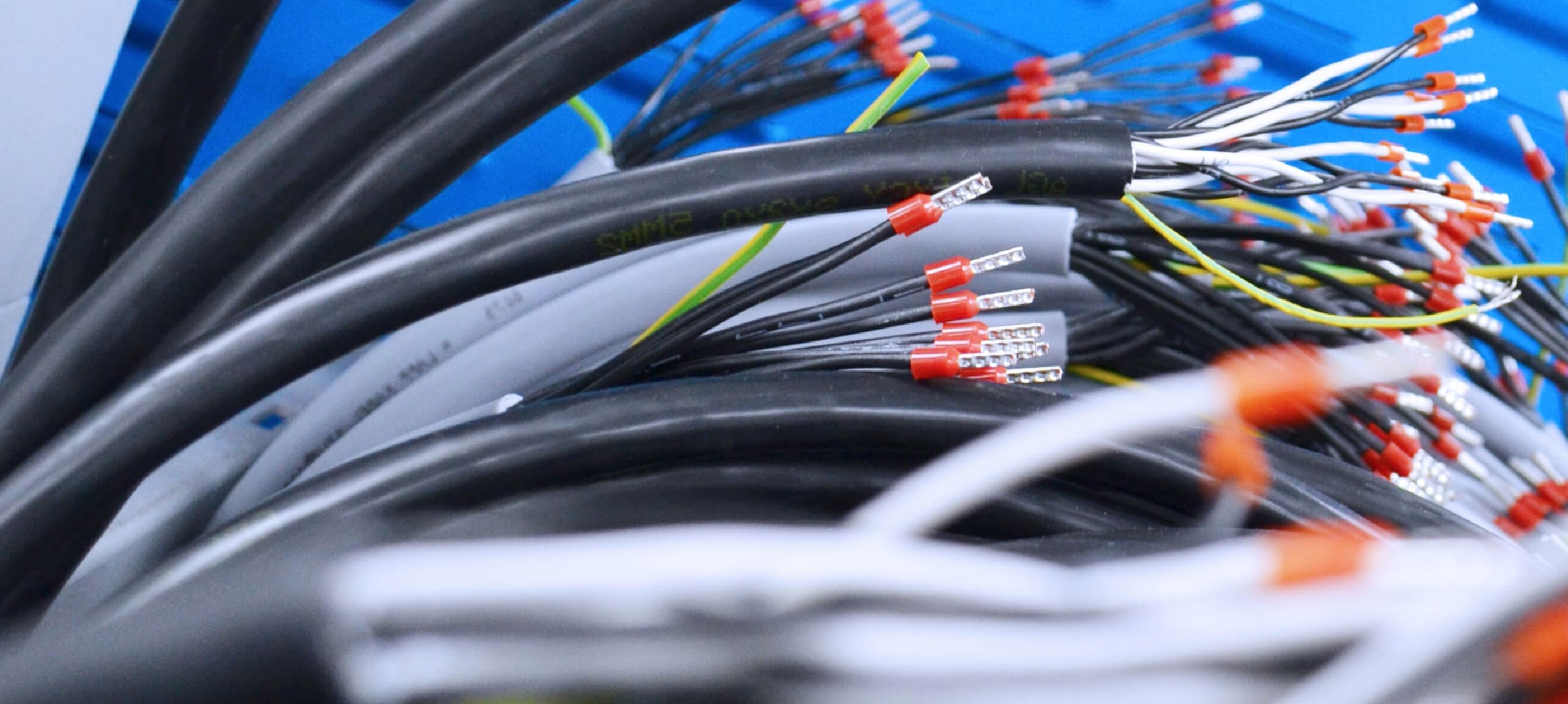CABLE
ASSEMBLIES
Strong Partnerships,Lasting Connections

Cornelius Electronics has been engineering Cable Assembly for over 40 years. However, we’re so much more than just a manufacturer! We’re here to listen, process, advise and solve your supply and product problems.
Cornelius Electronics is founded on the inherent belief of TRUE working partnerships. With your vision and our expert technical department we will work together to prototype and engineer the perfect harness solutions for you.
With over 250 fully trained operatives we will bring your vision into production. From our 50,000 Sq Ft facilities we will deliver sustainable, controlled scalability. Supplying the harnesses you need, when you need them.
The product cycle doesn’t end with your delivery. What did we learn, what do you need next, how can we streamline your supply chain, how can we work together for sustained mutual growth? Strong partnerships, lasting connections.

A cable assembly is a unified and organised combination of cables and connectors designed and engineered to transmit signals or power between devices. It typically includes a curated selection of specified cables, wires and connectors that are precisely configured and assembled together to meet specific outcomes and requirements. Thorough planning, accurate specification and high quality construction ensures robust, reliable and efficient long term connectivity. Cable assemblies are used in various applications such as electronics, control panels, telecommunications and industrial machinery.
Cable assembly solutions and the process of manufacturing cable assemblies involves several key steps.
1. Design and Planning: Begin with an accurate brief and detailed design. Outlline the cable types, lengths, connectors and overall layout. This stage considers the specific requirements of the client and the application.
2. Material Selection: Specify the correct cables, wires and connectors based on factors such as signal type, voltage, current and environmental conditions. Ensuring all relevant production standards will be met.
3. Cutting and Stripping: Precisely cut the cables to the required lengths and strip the coloured insulation from the ends to expose the conductors. Produce and prepare all the cables required to build the final cable assembly.
4. Termination: Attach the specified connectors to the stripped ends of the cables. This step demands precision to ensure secure, compact and tight connections.
5. Crimping or Soldering: Depending on the design and application, use crimping or soldering techniques to secure the connection between the conductor and the connector.
6. Assembly and Routing: Organise and assemble the cables to the specified design, taking care to avoid interference or damage. Appropriate routing is crucial for efficient performance, ease of fit and maintenance.
7. Testing: Conduct thorough testing to verify the integrity of the connections, check for a high quality fit, efficient continuity and ensure that the cable assembly meets specified electrical and mechanical requirements.
8. Labelling and Packaging: Label the cables for identification and package the assemblies appropriately, considering the intended use and environmental factors.
9. Quality Control: Implement quality control measures throughout the process to identify and rectify any issues, ensuring the final product meets or exceeds industry standards.
Cable assemblies serve a diverse range of purposes across a broad range of industries. Facilitating the efficient transmission of signals or power between devices and components. Common applications include telecommunications networks, industrial machinery, electric vehicle and automotive systems, leisure industries, military hardware, medical equipment and consumer electronics. These assemblies play a crucial role in connecting and powering devices, ensuring seamless communication and functionality in numerous electronic and electrical applications.
Testing a cable assembly to the required quality standards and accreditations is a crucial step to ensure its reliability and functionality. The testing process typically involves the following key steps:
Visual Inspection: Examine the cable assembly for any physical damage, loose connections, or improper crimps. Ensure that the assembly adheres to design specifications.
Continuity Testing: Verify the continuity of the conductors to ensure there are no breaks or short circuits in the cables. This can be done using a multimeter.
Insulation Resistance Testing: Measure the insulation resistance between conductors and between conductors and the cable's shield to identify any insulation breakdown or leakage.
Hi-Pot (High Potential) Testing: Apply a higher-than-normal voltage to the cable assembly to check for potential insulation weaknesses or breakdowns. This test helps ensure the cable can handle the specified voltage without issues.
Resistance Testing: Measure the electrical resistance of the conductors to ensure it falls within the acceptable range. Deviations may indicate issues with the conductor material or termination.
Connector Mating and Unmating Tests: Perform repeated mating and unmating of connectors to assess their durability and the overall robustness of the cable assembly.
Signal Integrity Testing: Evaluate the cable assembly's ability to transmit signals without distortion or interference, especially in applications where signal quality is critical.
Environmental Testing: Subject the cable assembly to environmental conditions such as temperature, humidity and vibration to assess its performance under varying circumstances.
Pull and Flex Testing: Apply tension and flexural stress to the cable assembly to ensure it can withstand mechanical strain without compromising its structural integrity.
Documentation Verification: Cross-reference the tested cable assembly against its documentation, ensuring that it meets all specified requirements and standards.
By systematically conducting these tests, manufacturers can identify and rectify any issues, ensuring that the cable assembly meets quality standards and performs reliably in its intended application.
While both cable assemblies and wiring harnesses involve the organisation of wires and connectors, they serve distinct purposes:
Cable Assemblies
Definition: A cable assembly is a combination of cables and connectors assembled for the purpose of transmitting signals or power between devices.
Components: It typically includes individual or bundled cables, connectors and any necessary terminations.
Application: Commonly used in various industries to establish connections in electronics, telecommunications and industrial equipment.
Wiring Harnesses
Definition: A wiring harness is a more comprehensive system that integrates multiple cables, wires and connectors into a unified and organised structure.
Components: It consists of several cable assemblies, often with additional components like conduits, protective sleeves and terminals.
Application: Primarily used in complex systems, such as automotive and aerospace applications, to streamline and manage the extensive network of wires and cables.
In summary, while a cable assembly is a simpler unit comprising cables and connectors, a wiring harness is a more complex assembly that combines multiple cable assemblies into a cohesive system, providing a structured and efficient solution for intricate wiring requirements.
Cornelius Electronics has been providing cable assembly solutions for more than 40 years. Our skilled IPC trained team offers customised solutions to a variety of industries and applications, from our 50,000 Sq. Ft. state-of-the-art production facility in the UK.
With over £3 million invested in the latest wire processing and manufacturing technology, we ensure repeatable controlled quality.
In the dynamic realm of electronics, where precision and reliability are paramount, choosing the right cable assemblies is crucial. At Cornelius Electronics, we understand the significance of seamless connectivity in powering today's technological advancements. Our Cable Assemblies page is your gateway to a world of innovation, offering solutions that bridge the gap between performance and reliability.
Our cable assemblies are meticulously engineered to meet the diverse needs of industries ranging from telecommunications to medical devices. Whether you require custom configurations or standard solutions, Cornelius Electronics delivers products that exceed expectations.
Precision is the cornerstone of our cable assembly manufacturing process. We utilise cutting-edge technology and adhere to stringent quality control measures to ensure that each assembly meets the highest industry standards. Our team of experienced engineers is dedicated to crafting solutions that guarantee optimal signal integrity and durability.
Versatility is a key feature of Cornelius Electronics cable assemblies. From power cables to data transfer cables, our product range caters to a wide spectrum of applications. Whether you're designing a state-of-the-art communication system or a medical device that demands flawless connectivity, our cable assemblies are designed to adapt to your unique specifications.
Customisation is at the heart of our approach. Understanding that every project has its distinct requirements, we offer bespoke cable assembly solutions. Our team collaborates closely with clients to comprehend their specific needs, ensuring that the final product aligns seamlessly with their application.
As technology continues to evolve, Cornelius Electronics remains at the forefront, consistently innovating to deliver cable assemblies that set the industry standard. With our commitment to quality, precision, versatility, and customisation, we empower businesses to achieve peak performance in their electronic systems.
Explore the possibilities of seamless connectivity with Cornelius Electronics Cable Assemblies. Trust us to be your partner in propelling your projects to new heights of success.
Our staggering capability to design and deliver a wide range of both bespoke and standardised Cable Assemblies is a cornerstone of who we are.


We may have been producing bespoke cable assemblies for nearly half a century, however we still pride ourselves on utilising the latest technology. To find out more click here >